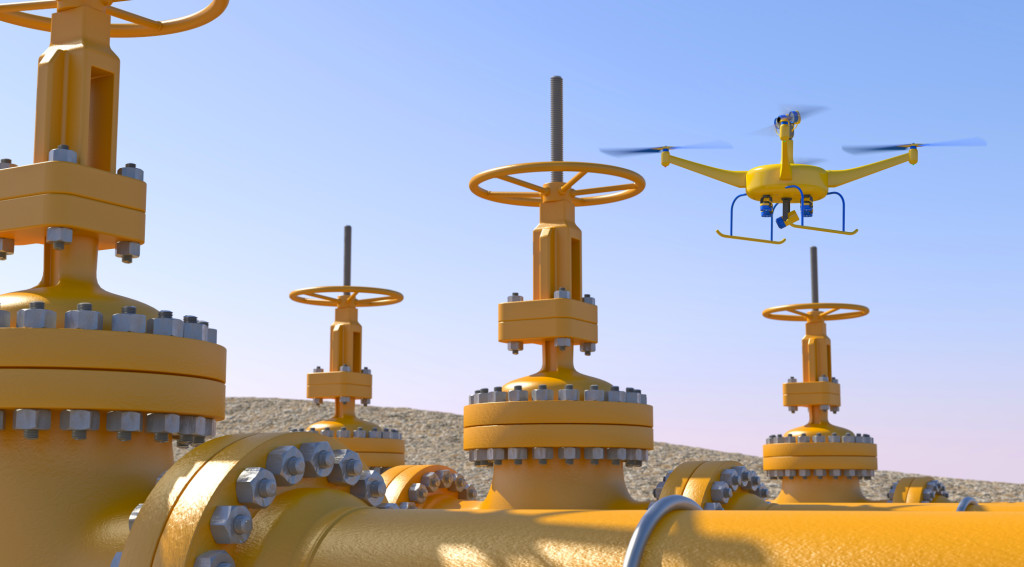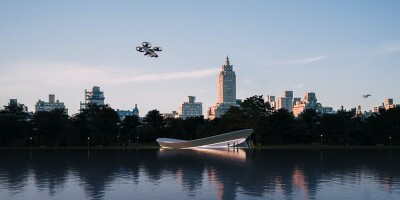A drone can go where a human being cannot go. A drone can be equipped with cameras and sensors to capture high-quality data, and this data can be collected and analyzed in real time to facilitate fast, effective decision making. A drone is inexpensive and reliable.
Given these factors, it’s no surprise that the inspection industry has embraced UAV technology.
Today, companies use drones to inspect and monitor large-scale construction sites, power lines, sewer systems, cargo ships, wind turbines, massive energy facilities, and more. Government agencies around the world are also deploying drones to keep an eye on their many assets, looking for potential problems and making repairs and adjustments before issues get out of hand.
Drawing on this technology, many industries are tapping into the high ROI drones offer for inspection work every day. Here a few examples:
- Drones have been used for pipeline inspections for many years, and a number of firms are finding ways to make these operations more effective. For example, SolSpec has developed a suite of industry-specific tools that augment the inspection process and automating workflows. This approach has been used to improve drone-based inspections of erosion control devices for stormwater management and geohazards. Using SolSpec’s analytics, clients can model exactly how water would flow over a surface within hours, and they can use this data to confirm whether or not systems are installed correctly. In addition, SolSpec’s solutions allow energy companies to better prioritize their resources and assess what actions may need to be taken across their entire systems. The resulting efficiencies translate directly to cost-savings because crews operate more efficiently.
- For inspections of concrete structures like bridges and tunnels, the software company Niricson employs a platform with an acoustic sensor, along with machine learning and the capabilities of their 3D modelling software, to provide multiple layers of actionable data. Recently, Niricson partnered with the project management company Pacific Triangle on a bridge inspection in Atlanta, Georgia. The firms employed remote data collection, utilizing lidar, underwater ROVs, helicopters, UAVs, and handheld cameras, to collect sensor data and conduct an acoustic hammer test. Representatives of Niricson and Pacific Triangle stated that their data collection techniques can cut days off of conventional onsite inspection work while giving clients high-quality data that they can analyze and act on almost immediately.
- Companies like Flyability are employing drones to bring added safety and efficiency to sewer inspections. This dark, dirty but critical work has long posed hazards to human inspectors. Exposure to noxious gases, sewage, and biohazards, along with the threat of rushing water and slippery surfaces, put inspectors at high risk. With drones, however, inspectors do not have to enter sewer pipes, which eliminates all human risk. A drone can collect all the visual data inspectors require, and this work can be replicated quickly and easily, enabling sewer inspectors to work with more and better information.
- Drones allow for safer and more accurate flat roof inspections. For example, fitting drones with thermal imaging cameras like Teledyne FLIR’s VUE® TZ20-R Dual thermal camera payload allows inspectors to see infrared energy that is usually invisible to the naked eye. As a result, operators can perform rapid moisture inspections to assess the condition of large commercial and industrial roofs. Moreover, they can review the condition of the many mechanical systems often found on these surfaces, including generators, HVAC systems, air handlers, duct work, access points, and solar panels.
As these examples illustrate, the use of drones for inspections creates significant value for industries ranging from energy to construction to public safety. Because of this strong ROI, more and more companies and public entities are investing in the technology.
According to Yariv Geller, CEO and Founder of vHive, “drones provide a method of getting the same data in a fraction of the cost and time without endangering people and generating data products and insights through automated workflows. Replacing cumbersome and dangerous processes with fully automated ones that give you results in real-time is the primary appeal that we've seen in the industry.”
Want to figure out what it can mean for you to define value with drone technology?
Flyability and Teledyne FLIR will be exhibiting at Commercial UAV Expo, in addition to more than 140 companies using advanced drone technology solutions for real-world applications. Commercial UAV Expo is the definitive event for professionals integrating or operating commercial UAS. With top-notch education, thousands of attendees, and more exhibitors than any other commercial drone event, it’s the best opportunity of the year for anyone who needs to keep up with commercial UAS technology, trends, and developments. Registration is now open - click here to register today.















Comments